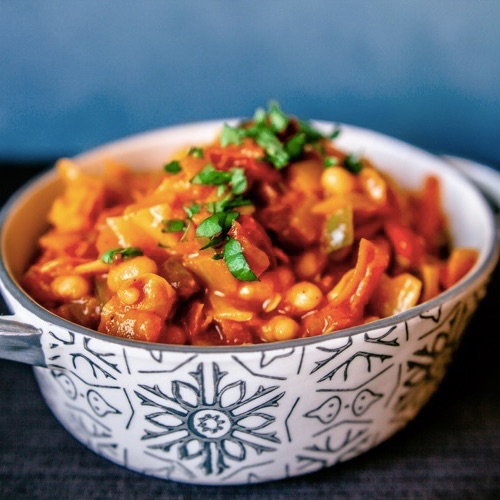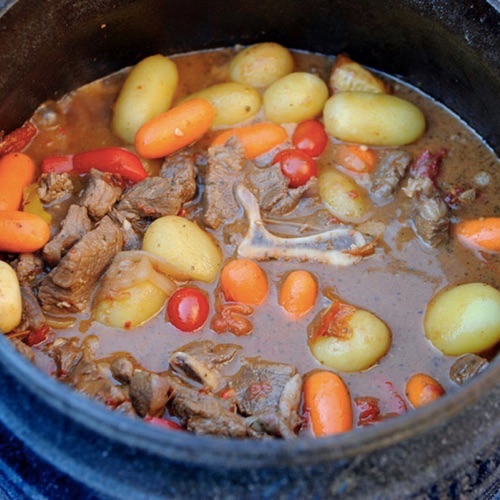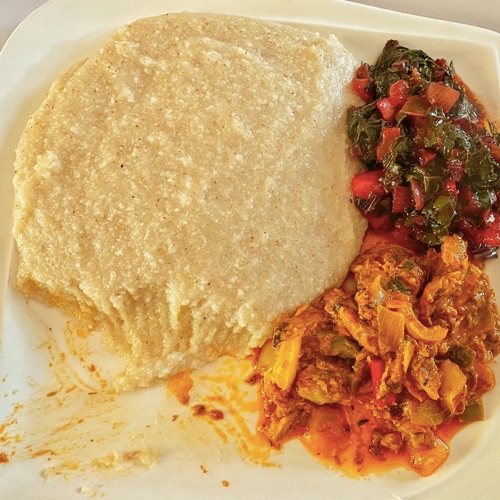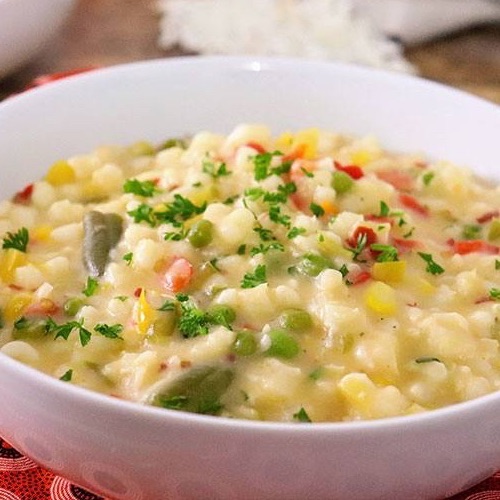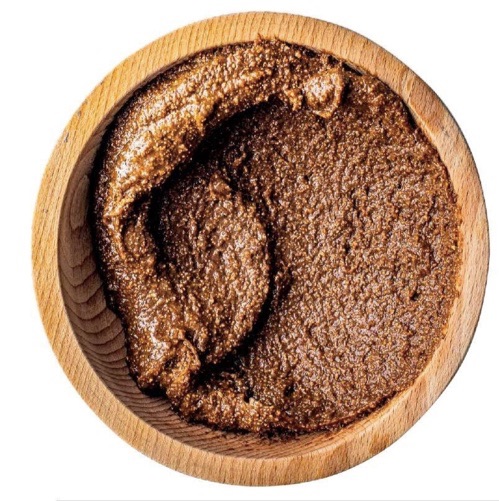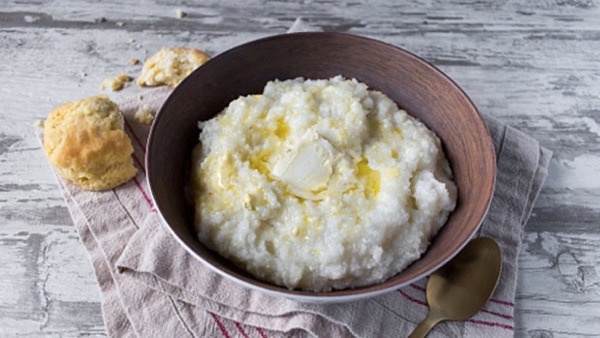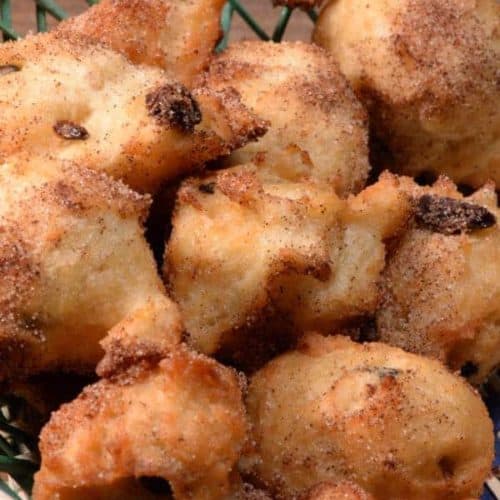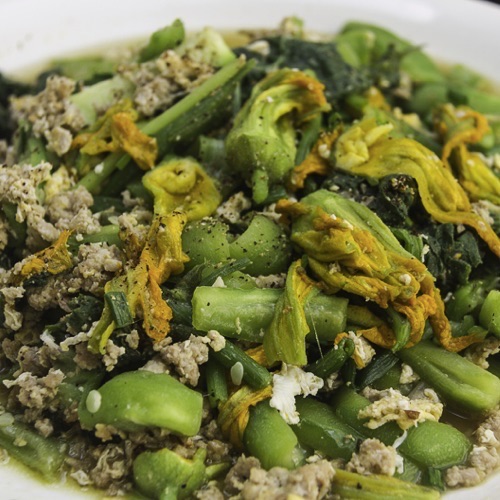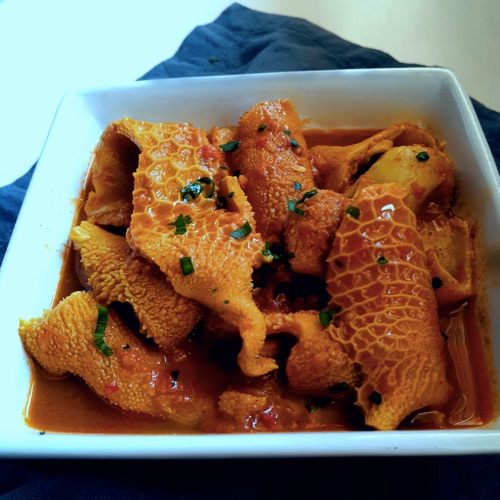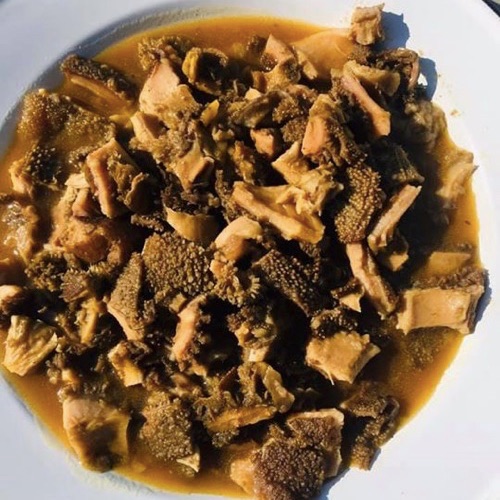South African food is reflective of the various cultures that make up its population. The Khoisan people, for example, originally inhabited the area and ate over 300 different kinds of edible plants. Some examples include the rooibos shrub legume, which still has a significant impact on modern South African cuisine.
Encounters with Bantu pastoralists later on led to the development of cultivated crops and domestic cattle. This then supported traditional Khoisan meat preservation methods. Also, Bantu-speaking communities came up with many different dishes and ingredients that are still eaten now by people living in both rural areas and cities.
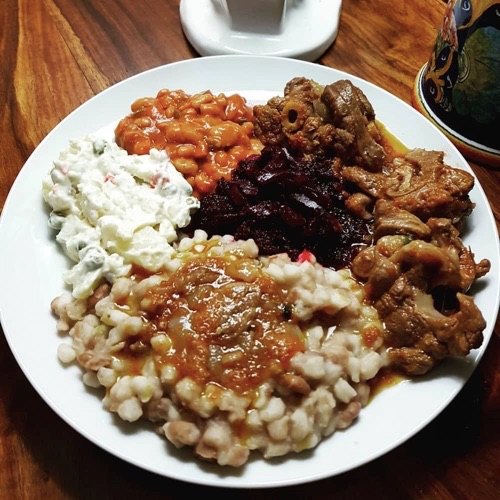
History
The San peoples were former hunter-gatherers who adapted to agriculture, learning from the Bantu peoples. The San now grow vegetables such as maize, squash and sweet potatoes.
By the 17th century, European immigration had resulted in Dutch and British foods being brought over, which caused further culinary diffusion. The Cape Malay community then founded a cuisine that was derived largely from South East Asian traditions. Afrikaner voortrekkers who were located further inland adapted Dutch, Khoisan, Cape Malay, and Bantu foods to suit their nomadic lifestyle.
Furthermore, French Huguenot refugees that settled in Franschhoek had an enormous impact on developing South Africa’s viticultural industry. Immigrants from Asia arriving as indentured laborers during British colonial rule in the 19th century contributed immensely to South Africa’s culinary landscape.
In particular, Indian South Africans brought with them a wide array of spices, seasonings and dishes that were historically associated with Kwa-Zulu Natal. Although Indian cuisine is now widely available across all of South Africa, it was initially mostly only consumed by those of Indian descent.
Disinvestments and sanctions originally placed on South Africa during apartheid significantly restricted the country’s culinary abilities. However, at this time shebeens (informal drinking establishments) in urban townships became increasingly popular.
They often served as community centres for black South Africans who wished to pursue their cultural and culinary traditions outside of traditional society restrictions.
Post-apartheid, South African cuisine experienced a rebirth. With various food options now available in most metropolitan areas to please tourists, expats and locals.
South African ingredients and dishes are becoming more popular worldwide as the country becomes wealthier and more influential. Also as more South Africans move to other countries.
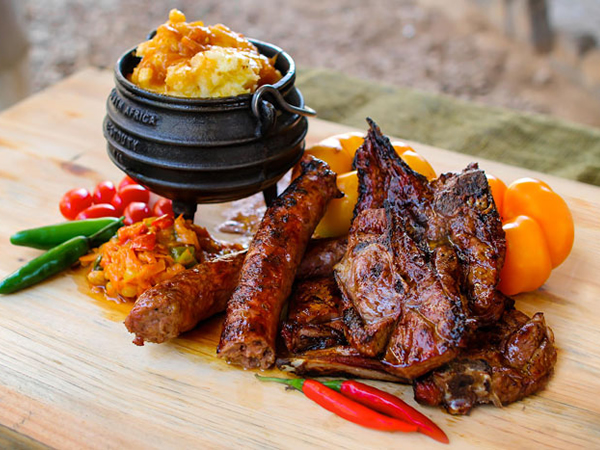
Indigenous South African Food
In the precolonial period, indigenous cuisine differed significantly from what we eat today. A wide variety of fruits, nuts, and other plants were gathered from the wild to supplement game that was hunted.
The domestication of cattle and grain crops by the Bantu speakers beginning 10,000 BC allowed for Khoisan groups to have access to fresh meat.
Prior to European colonisation, the staple diet consisted of cooked grains, sorghum and millet in particular, fermented milk (similar to yogurt,) and either roasted or stewed meat. At some point, maize took over as the primary grain for undetermined reasons.
Though there is controversy whether it originated from Central American settlers or if it had already spread through Africa via Africans who were forcefully brought back during the slave trade.
Not only did people keep sheep and goats, but entire communities would go on hunts for game together. Out of all the meat options, beef was by far the most important. It gave a person high status if they consumed it. To give you an idea of how valuable ribs from cattle were, after slaughtering, many villages offered them to their chief as a gift.
A traditional meal in a Bantu-speaking, South African home is usually a porridge made of maize meal (pap), which is similar to American grits. The meal would also include a stewed meat gravy that gives the dish its flavour.
Meat and Vegetables
Traditional rural families (and many urban ones) often ferment their pap, or maize porridge, for a few day. Especially if it is sorghum instead of maize. This gives it a tangy flavour. The Sotho-Tswana call this fermented pap, ting.
The vegetables used in this dish are usually pumpkins, which come from South Africa originally. Now, however, people from all over the world eat pumpkins.
Although rice and beans are not indigenous, they are quite popular. Another common vegetable dish amongst South Africans is shredded cabbage and white potatoes cooked with butter. This came from Irish immigrants.
In South Africa, meat is often the focal point of a meal. The Khoisan people roasted and dried their meat for storage, which has influenced the contemporary Southern African love of barbecue (usually called a braai) and biltong (dried preserved meat).
Today, South Africans consume beef as well as mutton, goat, chicken and other meats as the main dish of a meal.
On weekends, many South African families have a braai (barbecue), and the meal typically consists of pap en vleis (maize porridge/polenta and grilled meat). Even eating meat has ritual significance in both traditional and modern South African culture.
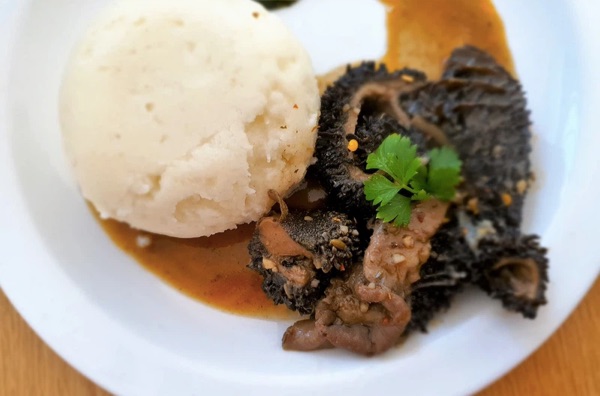
Cultural Occasions
In Bantu culture, for special occasions like weddings or the return of family members from a long journey, families will buy and slaughter a live animal at home. They’ll then prepare a big meal to share with their community or neighbourhood.
The ancestors are pleased when their descendant spills the blood of an animal on the ground, or so participants claim. On holiday weekends, entrepreneurs set up pens of live animals along roads in townships for families to purchase and slaughter.
Families mostly buy sheep and goats, but beef is the most prized meat for weddings. Affluent families often purchase a live steer for slaughter at home.
Cape Malay Food
Cape Dutch cuisine from South Africa is unique and easily identifiable by its use of spices such as nutmeg, allspice, and chili peppers.
The Cape Dutch cooking style is a result of the culinary traditions of the slaves brought over by the Dutch East India Company, as much as it reflects European cooking styles. This can be seen in the use of eastern spices and ingredients, as well as in the names given to many dishes.
The Cape Malay culinary tradition has blessed South Africa with dishes like curries, sambals, pickled fish, and various hearty fish stews. Bobotie is a dish that can be traced back to the Cape Malays. It consists of spiced minced meat baked under an egg-based topping.
Among the many dishes originating from South Africa, bobotie is likely the most well-known. The dish gets its name and curry powder flavoring from Dutch East India Company colonies in Batavia, while sambal, a spicy addition often served with bobotie, hints at its Malay Archipelago roots.
South African yellow rice is a sweet dish made with turmeric, raisins, cinnamon and sugar. It also has its origins in Cape Malay cookery, often being referred to as Cape Malay yellow rice.

